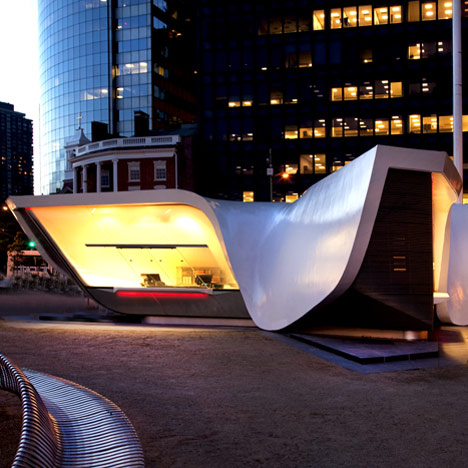
New Amsterdam Pavilion by UNStudio
The New Amsterdam Pavilion by Dutch architects UNStudio has opened to the public in New York's Battery Park.
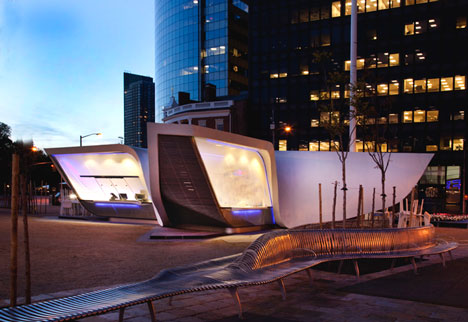
The four wings of the pavilion give it a flower-like form, which is illuminated by different coloured lights after midnight.
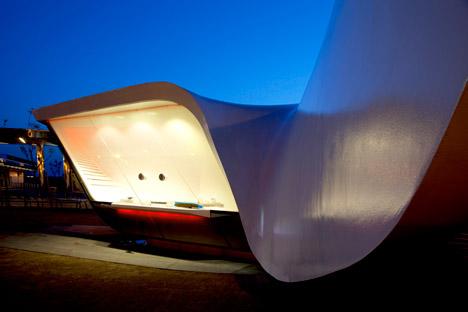
Construction was completed a year and eight months ago (see our earlier story), but complications with catering prevented the pavilion from opening until now.
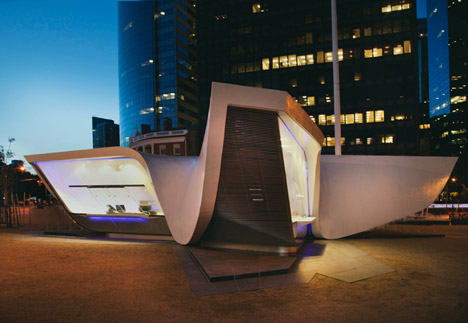
By day the pavilion is open to the public, providing a cafe and information point.
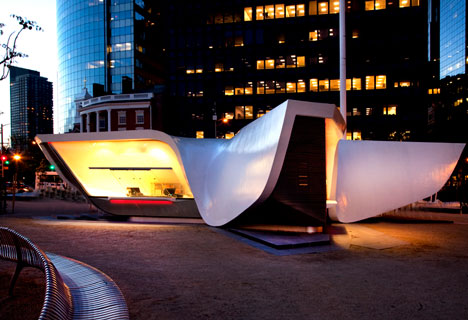
More stories about UNStudio on Dezeen »
More stories about pavilions on Dezeen »
Photography is by Richard Koek.
The following information is from UNStudio:
New Amsterdam Plein & Pavilion, Battery Park, New York, USA, 2008-2011
Placed on New Amsterdam Plein and commissioned by the Battery Conservancy, the NY400 Dutch Pavilion is presented as a gift from the Dutch government to the people of New York. The Pavilion is intended to introduce an opportunity for visitors, residents, and everyday commuters to pause and learn more at this historically important location. The Pavilion itself will be open to varying degrees throughout the day to the high number of commuters, tourists, and local residents.
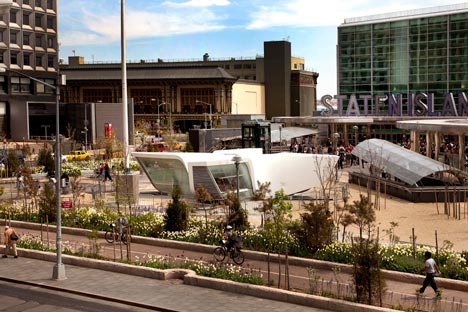
The Pavilion marks the location as a destination and a hub of various activities, creating a social eddy at a site that may otherwise go unnoticed by passers-by and commuters. The programme of this Pavilion oscillates between facility services (culinary outlet and information point), and a dynamic art, light, and media installation.
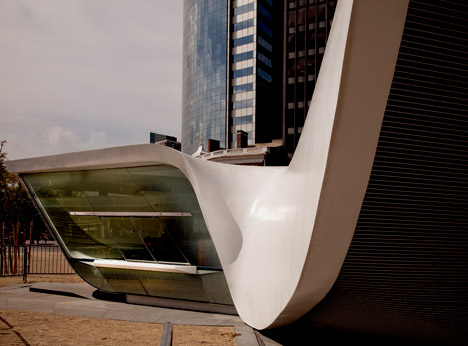
The geometry of the Pavilion expresses its programmatic intentions, with the centre of the installation designed for more permanent, enclosed functions. In contrast to the enclosed nature of the core, the formal figure of the structure becomes increasingly more fluid and dispersed away from this centre as it opens onto the immediate landscape of the surroundings. The attendant ‘flowering’ or opening of the four wings of the Pavilion responds to varying orientations on the site as well as variety within the main programme. Within each wing, the contrast between the inside and the outside is blurred through the expression of continuous geometry. The geometric loop is introduced to virtually obscure the boundary between the ceiling, wall, and floor and to promote integration of the built form with the surrounding park.
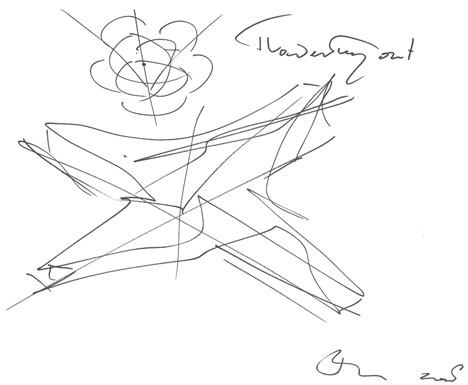
Although the Pavilion will be readily visible both day and night from the surrounding skyscrapers of Lower Manhattan, a welcomed human scale is established with the design. The changing geometry of the Pavilion ensures that there is no ‘backside’ to the structure; a 360-degree walk around the Pavilion reveals this non-hierarchical nature. Repetition is dynamic rather than static, allowing varying viewpoints and perspectives to be created.
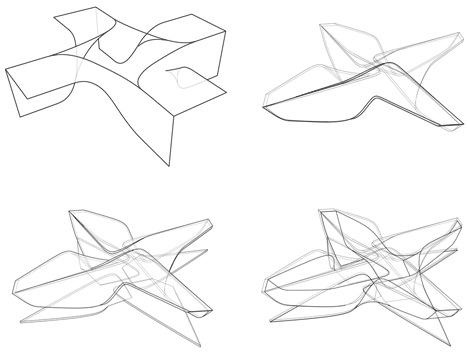
As point of interest for the Battery, the Pavilion will encourage visitors to engage and interact with the displays and functions provided. The value of the project extends beyond its immediate programmatic function by first raising awareness of the historical relationship between the Netherlands and its role in New York’s history, as well as by responding to the opportunity for a welcomed social venue at this lively site.
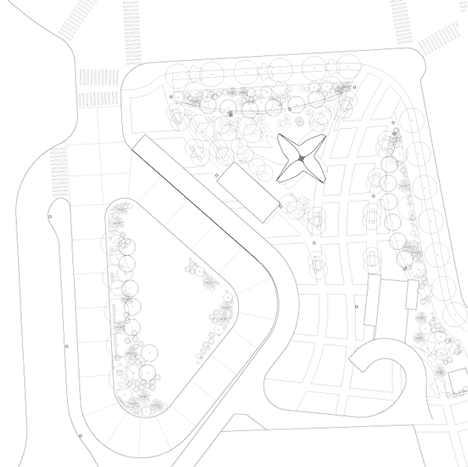
The Pavilion has an open character, with an evolving programmatic use, as new light and media installations are changed and new visitors personalize their use of the space. The presence of the Pavilion expresses to New York City’s residents and visitors the shared Dutch and American value of the importance of open, accessible, and inviting public space in the city fabric.
Alternating art and video installations will further the historical didacticism of the Pavilion, with specific works related to Dutch culture that will coincide with major national events in the Netherlands.
UNStudio: Ben van Berkel, Caroline Bos with Wouter de Jonge, Christian Veddeler and Kyle Miller, Jan Schellhoff, Wesley Lanckriet, Arndt Willert
Advisors: Handel Architects, New York (Executive Architect) Gary Handel, AIA, D. Blake Middleton, FAIA, LEED AP, Stephen Matkovits, AIA, LEED AP, Mark Morris
Buro Happold
(Lighting Design and Structural, Mechanical, Electrical, Plumbing and Fire Protection Engineering)